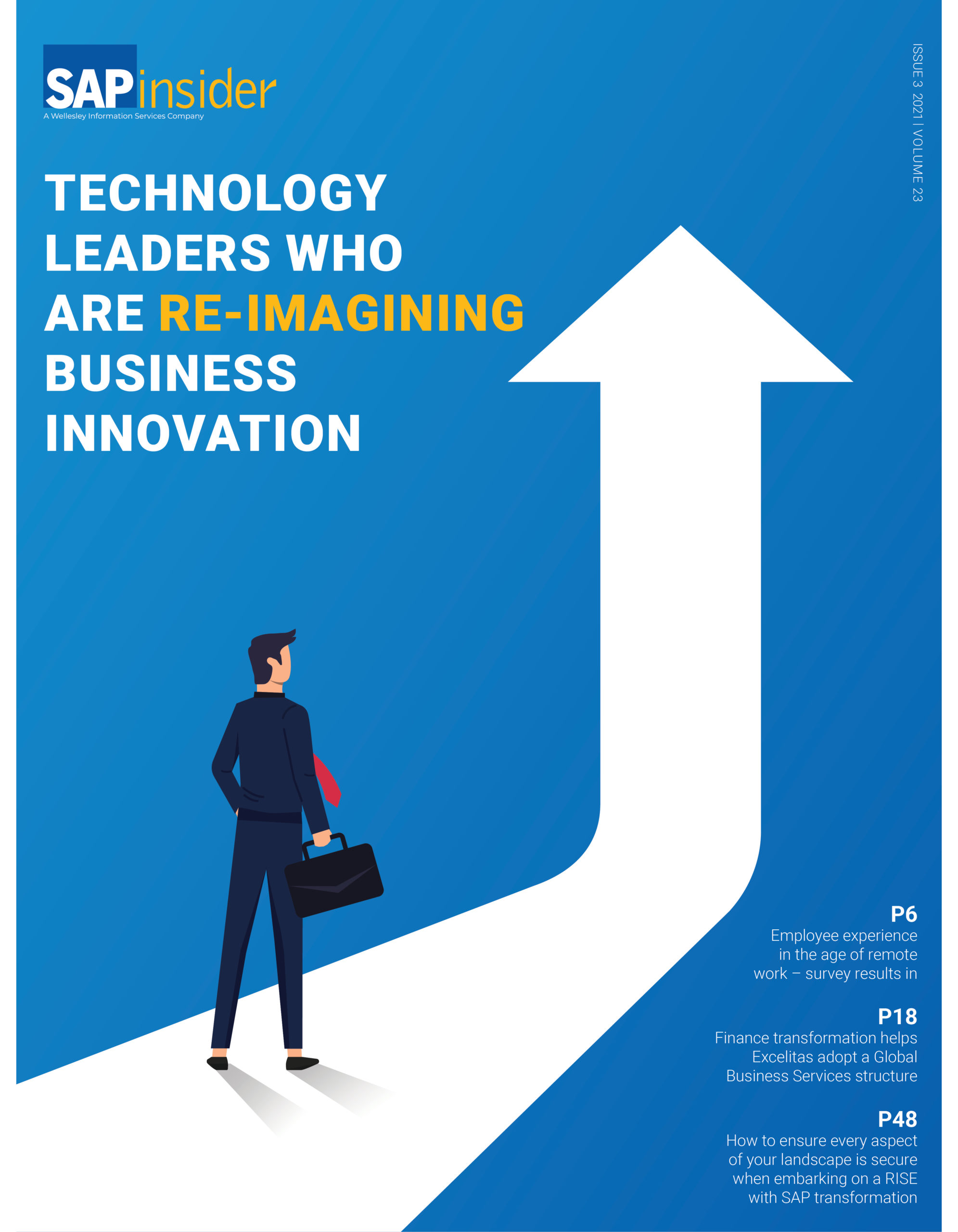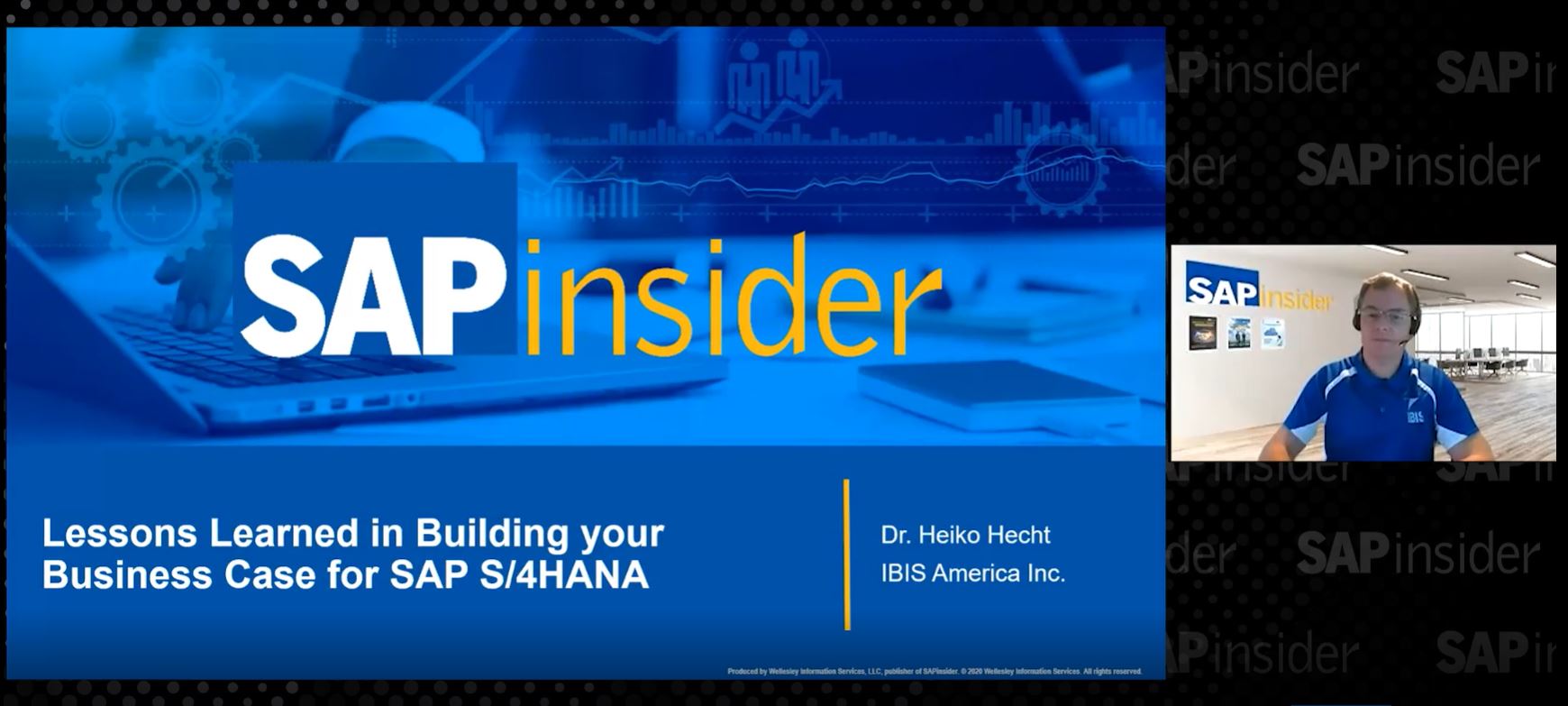Why Did We Do This?
By Rizal Ahmed, Chief Research Officer, SAPinsider
The move to SAP S/4HANA is likely the biggest technology and business investment related to SAP that your company has or will complete over the next several years. However, hindering many migration projects is is the company’s ability to build a compelling and justifiable business case. And even if an effective case is made at the outset, companies must continue deriving business value and showing sustainable return on investment (ROI) throughout subsequent years in order to sustain executive buy-in and ensure long term adoption. Critical to making this happen is getting leadership to truly understand the capabilities that the cloud and SAP S/4HANA can provide the business and enabling them to build on this vision without having to rely on IT. How do leaders create this synergy and collaboration? By establishing effective change management processes from the beginning and being creative in your approach, say executives in our community.
Our 2021 CIO Perspectives Benchmark Report found that over half of the executives (51%) polled said that SAP S/4HANA was their most strategic SAP-focused investment this year. Our annual SAP S/4HANA Migration Benchmark Report published in May found that those implementing or those that have implemented SAP S/4HANA jumped 10% compared to our 2020 study — up to 42%.
According to our SAPinsider State of the Market report, we also know that moving to the cloud is a strategic priority. More than half of our survey sample (53%) rated this as an area of significant investment. Our research also shows that it is not just one, but many flavors of cloud that are garnering both interest and investment. That same study showed that respondents are exploring a variety of cloud models including software-as-a-service (53%), private cloud (35%), and hyperscalers (27%), among others. Cloud solutions are increasingly appearing as critical pieces of IT landscapes as SAP and partners ramp up their investments and portfolios.
First Phase of Evolution: Provide A Modern Digital Foundation
There are several factors driving the acceleration of SAP S/4HANA projects. Leaders realize that they cannot adequately support the business with highly customized, antiquated solutions built around poorly integrated applications and data siloes. The past year of disruption brought this to the forefront. Leaders were required to alter product mixes, reconfigure supply chains, migrate to different selling platforms, and create elegant remote experiences for both customers and employees. And they all needed to complete these initiatives in days and weeks, not months and years.
These pressures to change both business and technology landscapes exposed the natural weaknesses of current legacy applications and systems. It also cemented many leaders’ confidence that the digital transformation agendas that they had started to initiate prior to the pandemic contain the right priorities based on their business needs.
In addition to disruption and change, the impending deadline for the end of maintenance of ECC is now one year closer, and that has put additional pressure on organizations to solidify their migration plans. In our recent SAP S/4HANA Migration Benchmark Report, the deadline driver has risen to the second most critical factor driving SAP S/4HANA strategy. While SAP has delayed the end of maintenance for SAP ECC to 2027, consider the fact that most migration projects average 12 to 18 months — not including the business case phase — according to SAPinsider research studies. But just because the adoption runway is longer, leaders cannot afford to wait to align technology investment with business priorities. The rapid availability of cloud solutions has also made the move a bit more enticing and digestible. Having important reasons to justify this significant endeavor will help you get off the starting blocks when it comes to your SAP S/4HANA migration, but it will not enable you to get the full value of this major technological investment once you get there. This is where some of the real work begins.
Inspiring a Consistent Culture of Innovation: Going from Push to Pull
While achieving a more flexible, responsive architecture is key in organizations’ digital transformations, it is only the first stage. Between SAP S/4HANA, hyperscalers, and best-of-breed cloud solutions there are now a significant number of innovative features and functionalities that can be enabled and utilized by the business with little or no support. And the rapid release of new technology and software offers a constant refresh of capabilities for the business to consider.
There are underlying artificial intelligence and machine learning functionality, access to predictive analytics and planning, and the ability to create new types of intelligent applications all available for use. But if IT leaders do not build a process and create a company-wide mindset to start exploring these features, then the business will likely continue as is, albeit on a much higher-performing, more expensive backbone.
During last month’s Technology Executive Forum advisory board meeting leaders lamented the fact that they need to figure out better ways to enable the business to drive innovation on their own. These individuals are approaching the back end of their IT transformation and upgrade projects, and now want to make sure that the business is making full use of the underlying capabilities on a consistent basis.
What they and other leaders struggle with is enabling the business to understand what they now have access to and new ways that their business partners can leverage this capability to solve real-world challenges and support continuous innovation.
It is an easy problem to articulate but difficult to solve. This is not to say leaders are failing. One of our member organizations is creating a new business and IT organization that does not have any hierarchies or rigid reporting structures. It hopes the fluidity of the new organization will encourage more creative collaboration and experimentation.
Another member organization has built an internal incubator in which business or IT professionals can conceive new brands and products and build an end-to-end pilot business with selling, marketing, and delivery capabilities. Failures are not punished, but important lessons are shared with the organization to inspire further exploration and new projects.
Stay tuned for more in-depth articles and interviews on these specific examples in the coming months as well as insights from our July Technology Executive Forum virtual meeting.
There is also the matter of making innovation a consistent priority for both business and IT. Since innovation is such a throw away word, we have defined some of the characteristics of innovative companies in the callout box that is part of this article. Innovative organizations are constantly pushing their business and IT employees to experiment and think differently about all aspects of their jobs and roles. This does not just mean focusing on new business models and products although these are driving elements. Innovation also includes coming up with new approaches to existing business processes, reports, and user experiences.
Innovation also requires in many cases organizational and cultural changes. Once new systems go in and users are initially trained, the exploration of new features and functionality can start to wane, and companies get in a standard mode of how they use the system. Many companies see an initial burst of innovative activity after go-live, but that soon dies down as the business takes on other projects and challenges. Culture ensures that innovation is constant well after the go live of SAP S/4HANA and other technologies.
What Does This Mean for SAPinsider Technology Executives?
In order to make innovation a sustainable part of your ongoing operating models, you need to follow these key guidelines:
Organize around innovation. This means creating centers of excellence or incubators in which business and IT employees can come together to learn about new technology and apply it to improve your business or create new ones. These should be safe places where failure is encouraged if lessons learned are understood, shared, and not repeated.
Start now before major technology transformation projects are complete. Begin exposing your business and line workers to new capabilities even before your project kicks off. Invite early adopters and your partners to create “art of the possible” demos and discussions to inspire new ways of thinking about technology. Demos and pilots will make whiteboard discussions come to life in more powerful ways to catalyze new ways of thinking.
Go beyond training. Let them play. Put new capabilities in the hands of your business users, do not just show it to them. You will be surprised what type of new ideas and use cases arise from their experimentation. They understand the strategy and business processes that are critical to the organization. With a little freedom and creativity, you will get some new possible uses that could never have been conceived in a boardroom or classroom.
Do not just focus on the top. Of course, leaders need to understand the potential and impact of new technology to get buy in from a budget and strategy standpoint. But it is the process owners and line workers that will be able to come up with ways to rethink current process landscapes and how to improve customer and partner experiences. There will always be those resistant to change. Leverage forward-thinking colleagues to help lead and communicate the benefits of early pilots and quick wins to those that are hesitant.
What Does an Innovative Enterprise Look Like?
Supports a highly collaborative, hybrid workforce: Geographic or role-based borders do not stop innovative companies from constantly sharing new ideas, trying new approaches, failing, learning, and trying again.
Aggressively adopts and experiments with new technologies across IT and the business: Innovative companies are constantly exploring new features and functionality across their IT landscape. And it is not just IT people that are experimenting and pushing these solutions to their limits. The business people in these organizations are constantly dreaming up new ways to leverage technology and building pilot solutions without IT driving the process.
Institutionalizes the innovation process: Innovative organizations have built out internal incubators and innovation centers throughout their organization. These resources have both IT and business investments and have strong governance of the innovation process that focus on learning and experimentation not necessarily success. As long as lessons are learned and not repeated this model becomes critical to building culture.
Embraces agile infrastructure, project, and operating models: Gone are the days where multi-year projects with far away results are the norm. While some major projects will still take months and years to complete, innovative organizations are leveraging agile project and adoption methodologies that enable them to get their feet wet quickly and show quick wins that are important to gaining business trust and buy in.
Approaches all initiatives with a digital-first and automation mindset: Innovation needs to focus on core processes and tasks that serve as the foundation of the business. These companies prioritize integration, digitization, and automation as a way for making their businesses efficient and freeing up their critical human resources to work on higher-level tasks and decision making.
Focuses on constantly improving employee, customer, and partner experiences: Experience is where culture is built. If you are constantly leveraging technology to improve the way your employees, customers, and partners interact with you, you will build long-term trust and engagement. Patterns and preferences have never changed so rapidly. This is why experience must be a top priority for both the business and IT teams.








